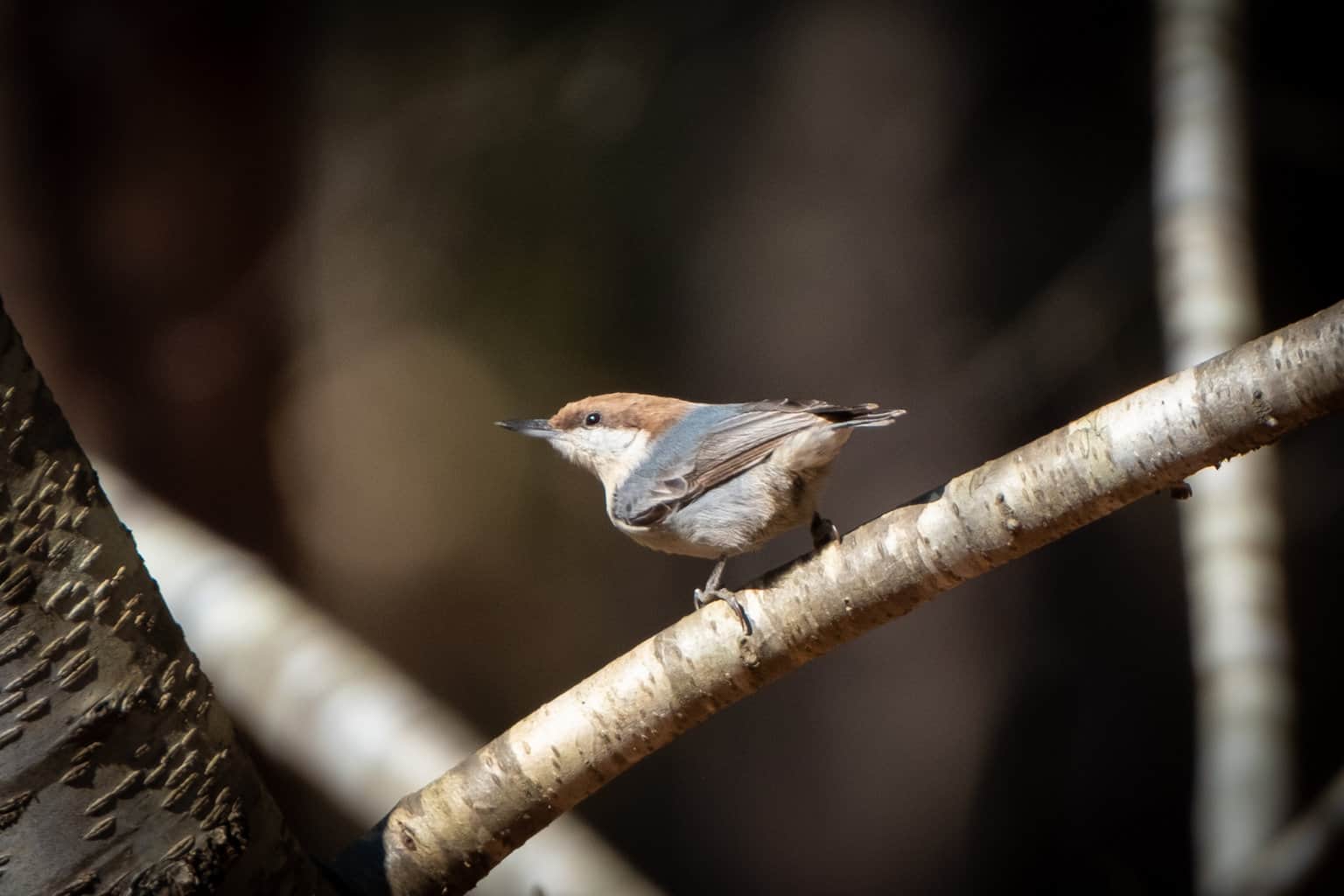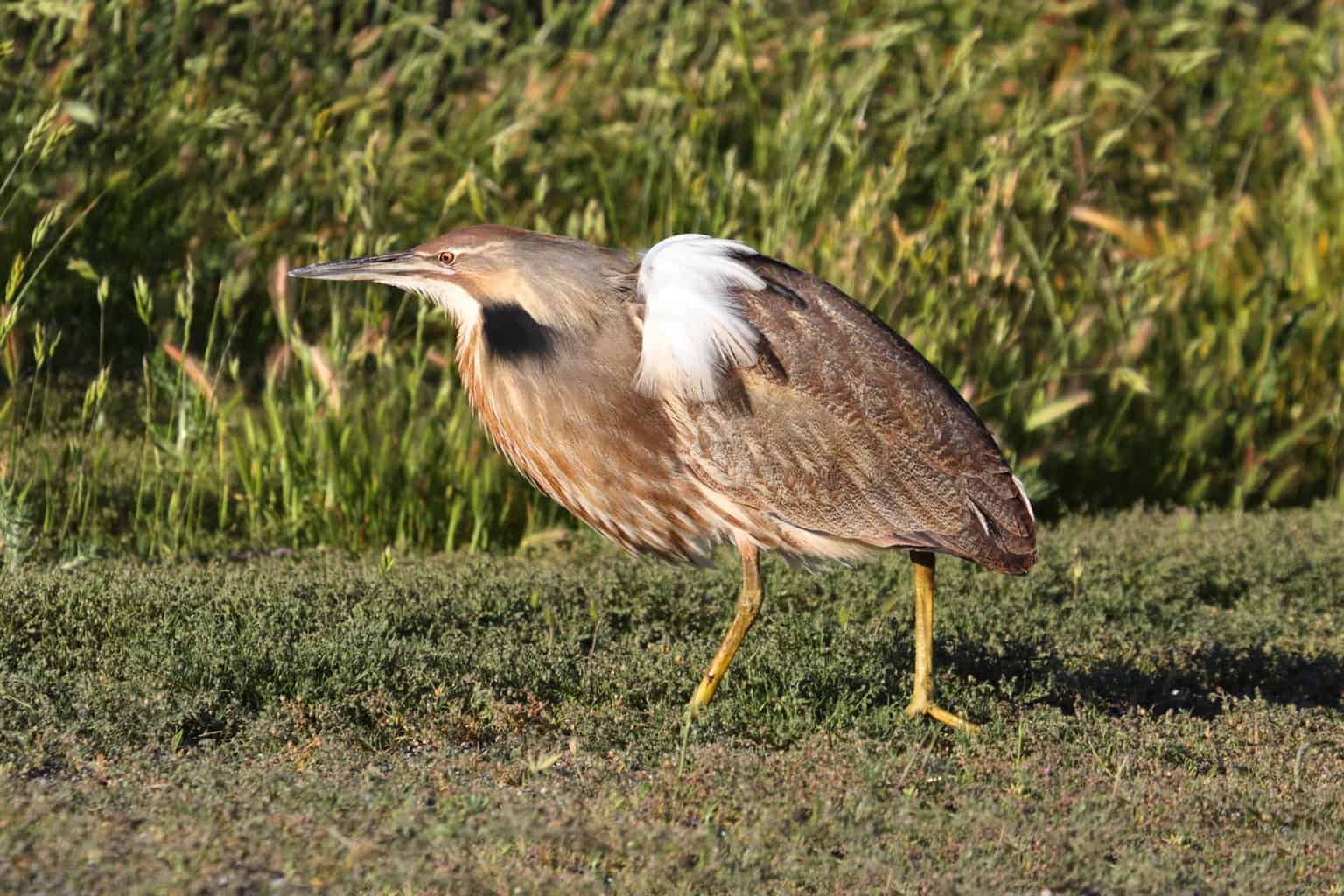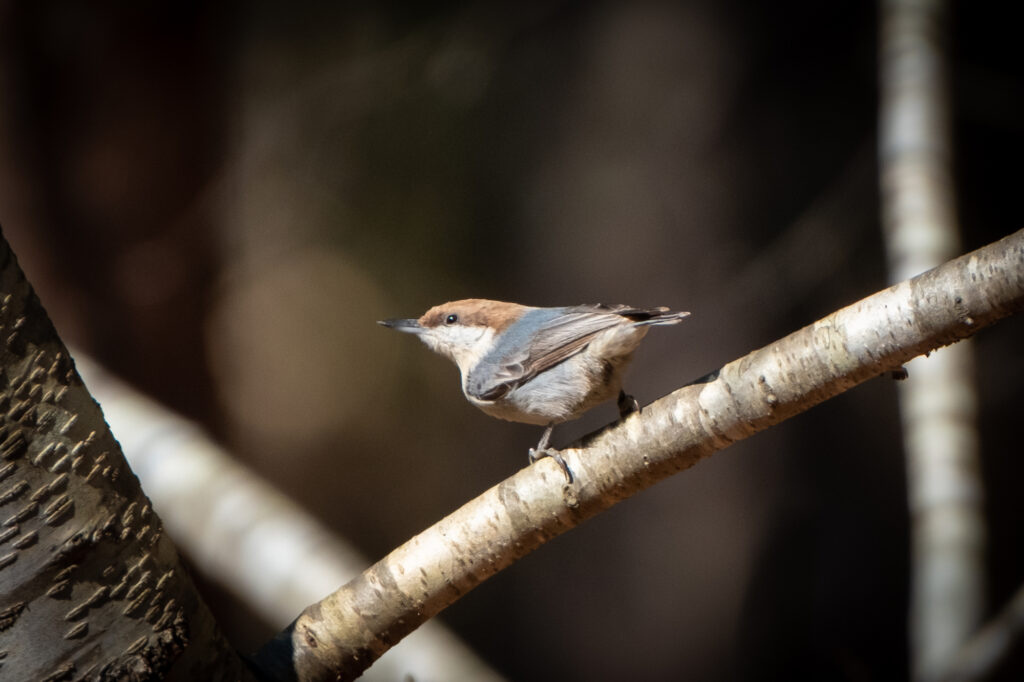The Brown-headed cowbird is known for its fascinating habit of laying its eggs in strangers’ nests. But its unique behavior isn’t the bird’s only noteworthy feature.
Brown-headed cowbirds are also interesting because of their unusual vocalizations. Their song has been described as water dripping into a pool.
Let’s look at this interesting little bird, especially how it sounds.
How to Identify a Brown-Headed Cowbird

- Length: 6.3-7.9 inches
- Weight: 1.3-1.6 ounces
- Wingspan: 12.6-15 inches
Male Brown-headed cowbirds aren’t difficult to identify by sight. It may take a bit more practice to easily spot a female. These are Icterids, which makes them members of the blackbird family. Other Icterids include Yellow-headed blackbirds, Bobolinks, Eastern and Western meadowlarks, several species of orioles, and the very common Red-winged blackbird.
Male Brown-headed cowbirds have shiny black feathers over most of their body and dark brown heads. They may look all black from a distance, but up close, you can see the difference between their head and body. Females are light brown, without much distinction to their coloring or patterns. Their head and belly are slightly lighter than the rest of their body.
Other Features
- Their bill is finch-like. It is short and thick (much more so than the bills of other blackbirds).
- They have shorter tails than other blackbirds, too.
- Their heads are thicker than their blackbird cousins.
Brown-Headed Cowbird Range & Migration
Brown-headed cowbirds live throughout North America. They are year-round residents of the Southeast, Northeast, and parts of the Midwest and Southwest. They also live along the West Coast and in Central Mexico.
During their breeding season, they can also be found throughout the rest of the continental US and the southern range of Canada. Some individuals spend the winter further south, migrating as far as 500+ miles.
Brown-Headed Cowbird Habitat
Brown-headed cowbirds live in big, open areas. They like fields, yards, meadows, and farms and usually perch high in the treetops.
Cowbirds get their name from their behavior, not their appearance. In the 1800s, they were seen following behind large cattle herds (including buffalo). This is because an abundance of insects is displaced in the aftermath of a passing cattle herd and ready for the birds to sweep in and eat!
What Do Brown-Headed Cowbirds Do With their Eggs? All About Brood Parasitism

Only a handful of other birds practice brood parasitism, including the Brown-headed cowbird and cuckoo.
What is Brood Parasitism?
A parasite gets its food by infesting a host. Brood parasitism is different, despite having a similar name.
The vast majority of birds in the world lay eggs in a nest, hatch those eggs, and raise their young from hatching to adults. Some birds use borrowed nests, but pretty much every bird lays and raises its own eggs.
Not so with brood parasites!
Brood parasitism is the practice that cowbirds use to lay their eggs in the nest of an unsuspecting stranger. They will lay their eggs in the nests of just about any other bird, even if their eggs are totally different in size or color.
Researchers have documented cowbird eggs in the nests of 247 other species!
Some birds will notice the different eggs and push them out of the nest, but many birds never take notice of the difference. They will raise the baby cowbirds as their own.
Where Does Brood Parasitism Come From?
This behavior is based on an evolutionary impulse to reproduce as successfully as possible. Because they don’t need to incubate or raise their own young, Brown-headed cowbirds can lay up to 40 eggs in a season.
Many of their eggs will never make it to adulthood, but they have a greater chance of survival by laying as many eggs as possible. They will lay between one and seven eggs in each nest that they visit.
Brown-Headed Cowbird Sounds
Let’s talk about that unusual sound that Brown-headed cowbirds make! Do they really sound like water dripping?
Yes, it’s true! Brown-headed cowbirds have a fascinating sound that is reminiscent of the sound of water dripping.
Check out this video of a Brown-headed cowbird’s unique song.
In the video, you’ll hear two vocalizations: a fairly unremarkable chirping interspersed with the drip-dropping sound of water.
This second video refers to the Brown-headed cowbird’s song as a “liquid gurgle,” which seems like another great description for it!
Here’s a third and final video, which was filmed from someone’s backyard. In it, you can hear a flock of Brown-headed cowbirds calling to each other. It sounds like a bubbling brook is nearby!
Other Cowbird Sounds
In addition to the liquid-sounding songs of a Brown-headed cowbird, you may also hear various calls. They can whistle, chatter, click, and buzz. Females use their chattering to attract mates, but males chatter much less frequently.
Cowbirds are vocal while eating, too. The sound they make while eating is a low clucking sound.
Where Do Cowbirds Learn Their Songs and Calls?
If cowbirds are raised by totally different species, and never their own parents, then how do they learn their calls and songs? How do they learn cowbird behaviors?
Interestingly, the longer a cowbird spends with its non-cowbird family, the more it will sound like a different species.
However, many fledgling cowbirds actually end up spending quite a bit of time with their original parents. Mother cowbirds tend to stay near the nest where they laid their eggs and keep an eye on the cowbird chicks from a distance. This means that baby cowbirds are still consistently exposed to their own species’ songs, sounds, and behaviors.
Are There Other Birds That Sound Like Water Drops?
Cowbirds are the most famous “water-sounding” birds, but they’re not the only ones.
European Nightjar

The European Nightjar also sounds a bit like dripping water when it chirps, but there is no overlap between the range of a European Nightjar and a Brown-headed cowbird. That leaves little room for mixing up these two birds by sound!
European Nightjars also have an intriguing appearance. They look almost like a pile of leaves, which allows them to blend into their surroundings and be almost unnoticeable to predators and birders!
Swainson’s Thrush

The Swainson’s thrush may be shy and hard to spot, but you may hear it before you ever see it. Their main vocalizations are similar to an American robin, but they are capable of making a “plink” sound that has sometimes been described as water dropping onto a solid surface.
American Bittern

To be fair, The American bittern doesn’t sound like water dripping. However, its song does sound like water gulping! Another way to describe the bittern’s song is that of running water through a big old hand-cranked pump.
Watching & Listening for Brown-Headed Cowbirds
Most people in North America live at least part of the year in a region with Brown-headed cowbirds. You can watch for the male’s distinctive black-and-brown pattern, or you can listen for their unique, liquid-sounding song, which is usually paired with the birds’ other sounds.
And, of course, if you ever have the chance to safely glance into a songbird’s nest and spot an egg that looks quite different from the rest of the clutch, there’s a good chance you’ve just encountered a Brown-headed cowbird egg! Keep an eye on the nest–from a safe distance, of course–to see if one or more of the babies looks quite different from its nesting companions!

